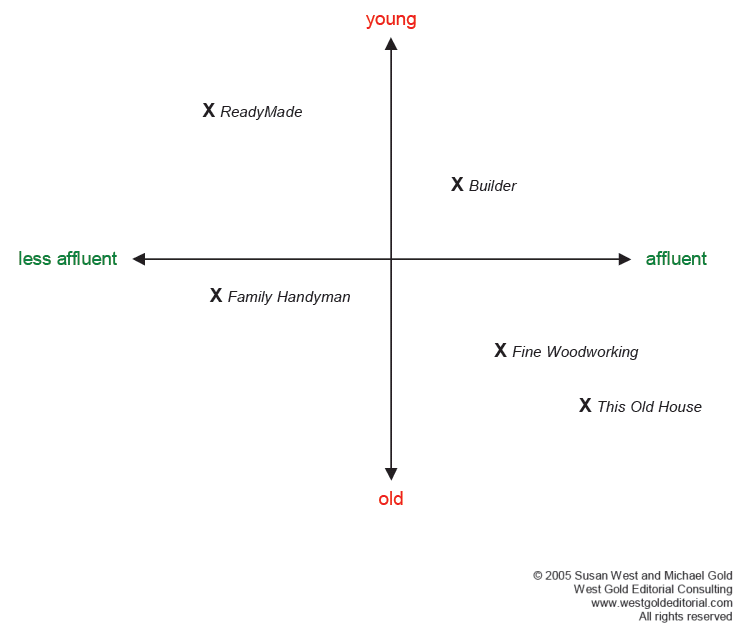Here’s a handy way to get your magazine team thinking and talking about the competition: Make
a map.
In the sample below, we’ve mapped a bunch of magazines aimed at household do-it-yourselfers. The axes rate primary readers on two key characteristics: how old they are and how well off they are. (The positions we’ve chosen for Family Handyman, This Old House, ReadyMade, and the others are for demonstration purposes; they are not the result of careful analysis.)
At a glance, this sample map tells us, among other things, that there are three magazines in the field targeting the more affluent readers, and two that cater to the other end of the spectrum. The affluent-and-older quadrant is a bit more crowded than the younger-and-affluent zone.

Of course, there are many other reader traits that could be used to locate and define each magazine within this competitive set, including: Urban / Suburban, Male / Female, Hands-On-Type / Dreamer, and Beginner / Expert. The more characteristics you map, the more revealing information you turn up about your competitors and about your own magazine. You’ll also generate lots of questions to investigate and discuss. For instance:
- Is your magazine doing all it can to address your readers’ interests—especially considering that several other publications are going after the same audience in very different, but effective ways?
- Do your magazine’s cover and internal display copy connect strongly with this audience?
- What does the competition do better?
- What makes your magazine stand out from the pack?
- Is there a group of under-served potential readers in this field that you should consider targeting?
This is an important exercise for anyone hoping to launch a new magazine and anyone striving to
keep an existing publication successful in a competitive field (and who doesn’t have
competitors?). It also makes an entertaining game for retreats and strategy sessions: Participants
take turns placing their publication and its challengers on the map—and analyzing the
implications.
Call it “Pin the Tail on the Competition.”



